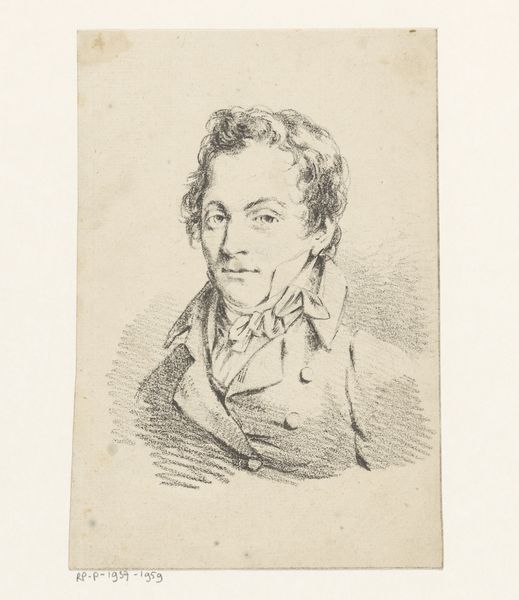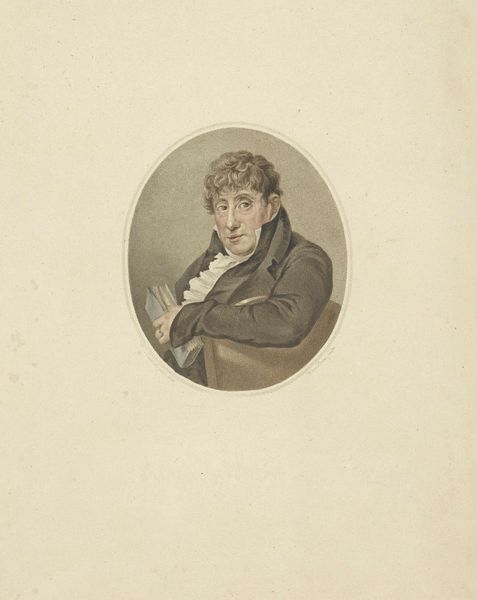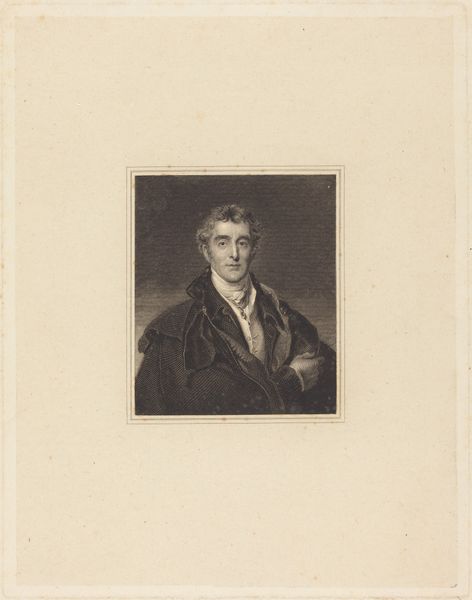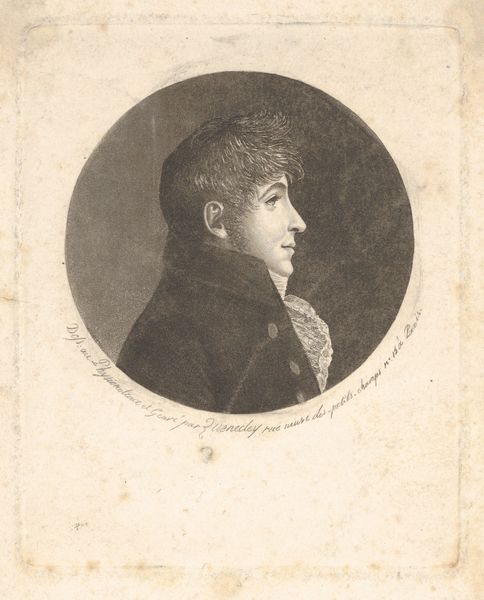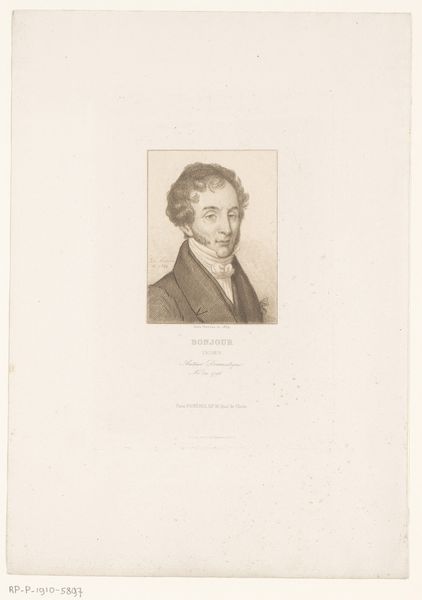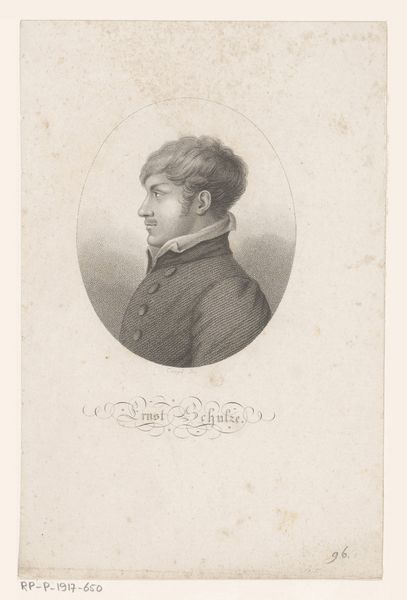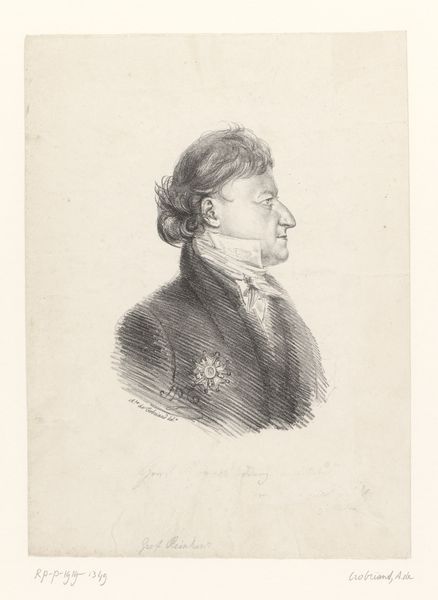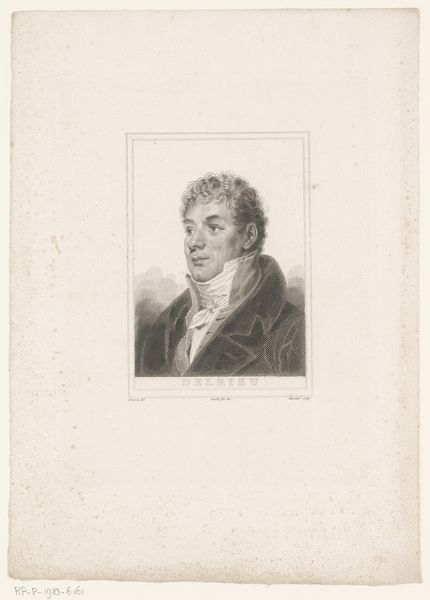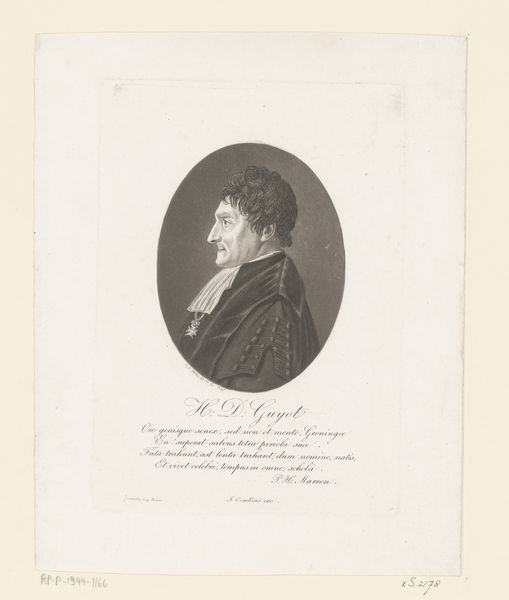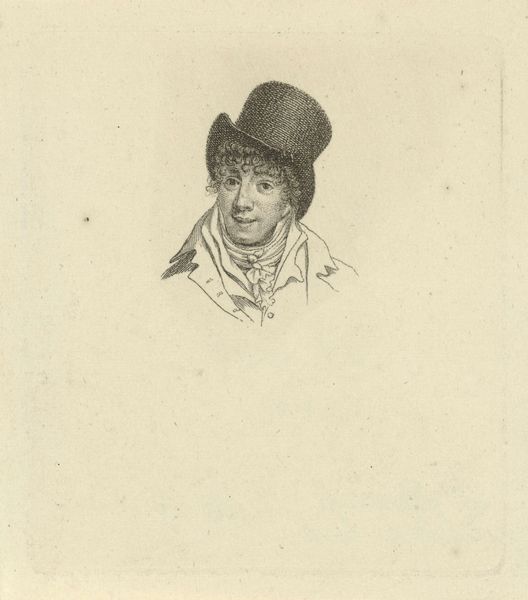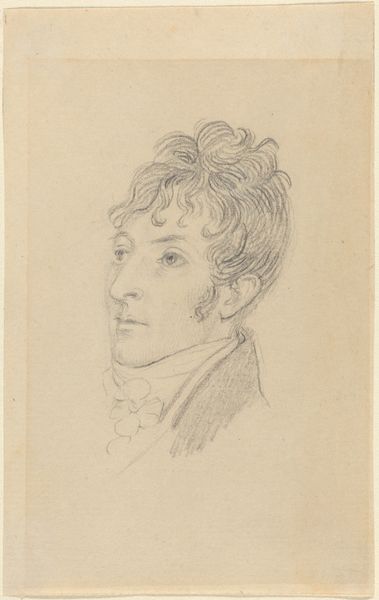
print, engraving
#
portrait
# print
#
romanticism
#
engraving
#
realism
Dimensions: height 136 mm, width 109 mm
Copyright: Rijks Museum: Open Domain
Curator: Looking at this print, titled "Portret van een onbekende man, mogelijk een schilder," or "Portrait of an unknown man, possibly a painter," by Eustache Hyacinthe Langlois, created sometime between 1787 and 1837, I'm immediately struck by the figure's melancholic air. The sharp lines give it a cool detachment. Editor: Indeed, the sharp lines result from the engraving process, a method of printmaking that allowed for wide distribution. I'm more interested in how the material conditions and labor of reproducing images contributed to art's democratization. Here, an engraver reproduces a portrait; who was he trying to reach, and what were the intended networks for distributing and accessing this portrait? Curator: The engraver's artistry captures the man's gaze. The subtle use of light and shadow to convey an underlying feeling of introspection; it makes me wonder what symbols or narratives are interwoven. Editor: While the "inner state" interests you, I’m curious about what statements it attempts to communicate through his coat. Was there a local source of textiles that dictated that fashion, or larger European trade connections that influenced the garment's manufacture and material availability? Was there specialized tailoring in its production? Curator: The period coincides with a time of emerging individualism and focus on psychological depth, reflected in the figure's direct and intense gaze. The style suggests Romanticism, even though elements of Realism ground it. What enduring narratives or values do you believe he’s trying to display? Editor: Perhaps that intensity comes more from the relative ease of reproducing this portrait versus commissioning it in paint, or in a unique sketch; and therefore it allowed a certain stratum of middle-class individuals access to having their status recognized through engraved portraits. Its seeming Romanticism results, potentially, from industrialization and from wider consumption of materials such as paper and ink! Curator: Interesting perspective. For me, this image connects us to questions of identity and the sitter's potential artistic legacy. Editor: Well, for me, this piece forces us to reconsider art as an expression or commodity born out of material circumstances.
Comments
No comments
Be the first to comment and join the conversation on the ultimate creative platform.
